With its Seasprites due for replacement in 2027, the Defence shopping list includes nine maritime helicopters. Editor-at-large Peter Greener surveys the market and considers the main contenders.
In the interview with the Secretary of Defence in the Autumn issue of Line of Defence Magazine, it was noted that in the Defence Capability Plan 2019 (DCP 2019) the replacement of the maritime helicopters had been brought forward, and the current eight Kaman SH-2G(I) Seasprites were to be replaced by nine new aircraft in 2027.
In discussing this future capability, the Secretary observed that, “Ultimately it boils down to what the Government requires. Undoubtedly the specification will require a range of capabilities in the new maritime helicopters; a combination of sealift, patrol and combat capabilities.” Whilst a Request for Tender is envisaged in 2024, industry engagement and planning will need to progress significantly during the tenure of the next government. This next government will therefore need to signal what is required.
This article discusses this crucial complementary capability for the Royal New Zealand Navy (RNZN), exploring a range of aircraft with a wide range of capabilities.
The DCP 2019 indicates that there will ultimately be nine RNZN ships capable of embarking helicopters. With the purpose and therefore the requirements of each class of ships varying significantly, the replacement maritime helicopter needs to be versatile and affordable. What all RNZN ships have in common is that they operate at times in some of the most hostile sea-states on the planet, a further challenge for maritime helicopter operations.
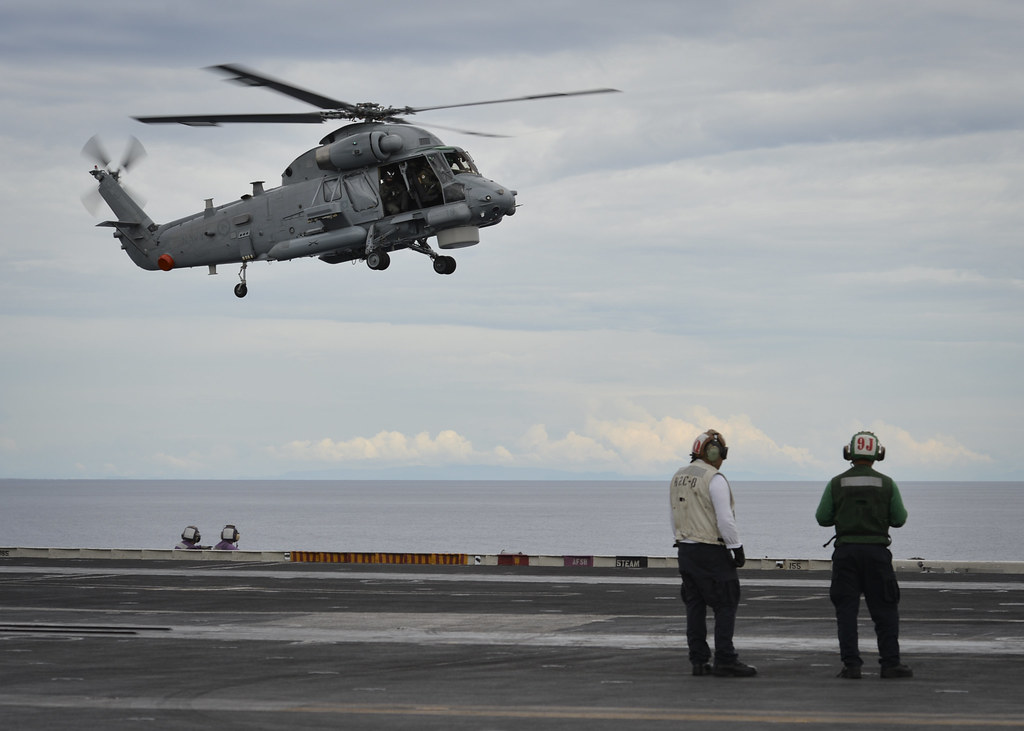
In reviewing the international aviation press it becomes readily apparent that the number of capable, available, contemporary maritime helicopters are few.
Whilst there are other maritime helicopters available, a number of commentators agree upon eight of the top performing helicopters globally, based on equipment, range and endurance.
These eight include the SH-2G Super Seasprite, the predecessor to the SH-2G(I) Seasprite. Also included are three machines manufactured in Russia or China; the Chinese Z-18F, an anti-submarine helicopter that can be deployed on smaller surface combatants of the People’s Liberation Army Navy; the Russian Ka-27 helicopter used by the naval forces of Russia, Ukraine, Vietnam, China, and India; and the Chinese manufactured Z-9EC, an Anti-Submarine Warfare (ASW) helicopter operated by Pakistan.
Excluding all four of these aircraft, this then leaves the Leonardo AW101(Military), the NH Industries NH90 NFH (Naval Frigate Helicopter), the Lockheed Martin Sikorsky MH-60R Romeo, and the Leonardo AW159 Wildcat.
In assessing these four remaining aircraft, whilst acknowledging that the new government will need to confirm what is required, it is perhaps helpful to review the specifications required at the time of the SH-2G(I) Seasprite purchase. In the Major Projects Report 2015, the Ministry of Defence noted six requirements:
- Conduct military and civil surveillance;
- Embark and operate from all RNZN aviation-capable units;
- Detect threats in a hostile environment;
- Conduct maritime search and rescue;
- Prosecute surface and sub-surface targets;
- Utility lift.
How well might the four remaining aircraft meet these requirements?
Leonardo AW101 (Military)
The Leonardo AW101 multi-role helicopter is capable of performing a wide range of missions in maritime and littoral environments. It has been widely used in a number of European navies and air forces, along with the Royal Canadian Air Force and the Japanese Maritime Self-Defense Force.
In Royal Navy service there are two variants, a dedicated anti-submarine warfare aircraft, the Merlin Mk.2 and a Commando battlefield helicopter, the Merlin Mk.3. In addition to its ASW capability the helicopter can also be armed with anti-ship missiles, air-to air missiles, air-to-surface missiles, rockets and gun systems.
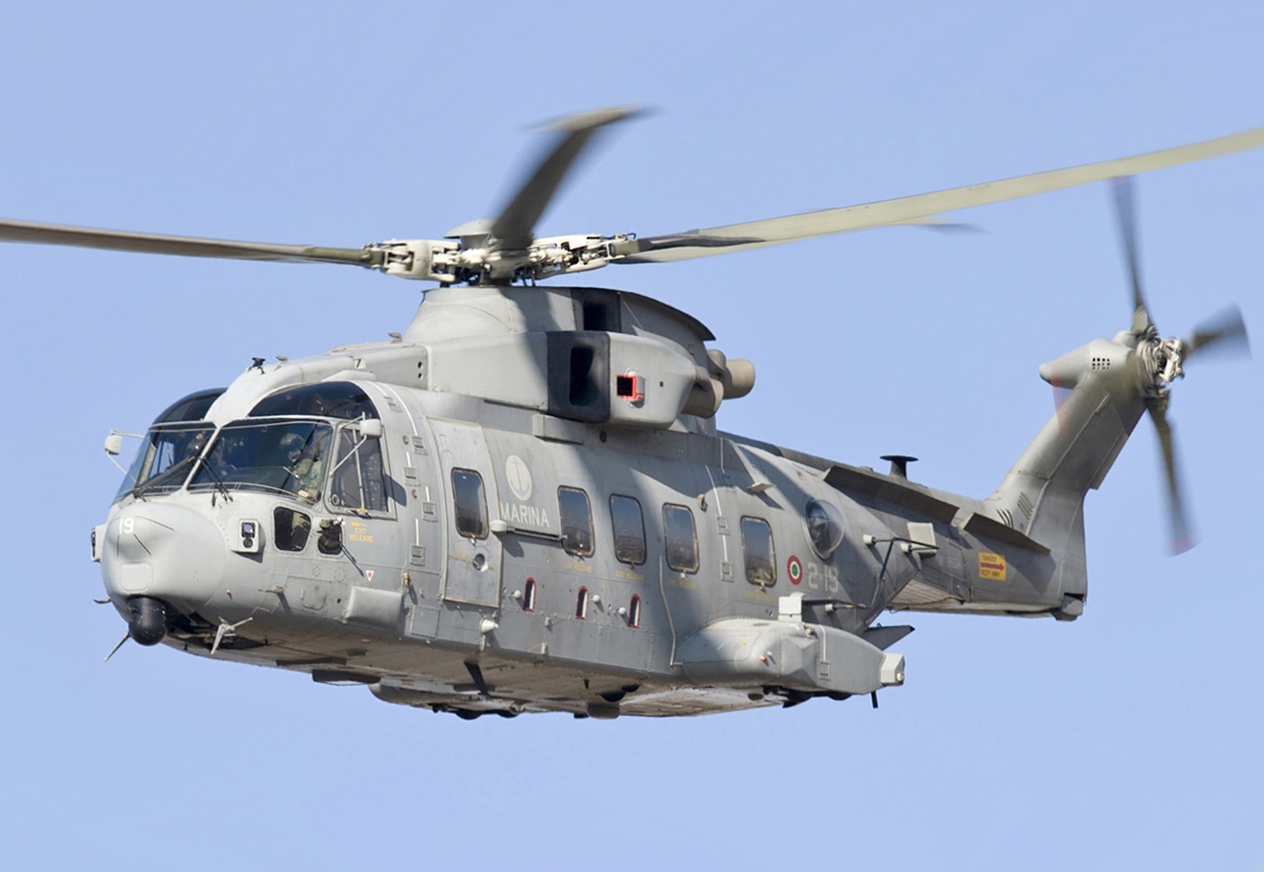
Whilst a very capable helicopter, it is rather more than is needed; it is also very large at 22.83 metres long. As such it would not meet requirement (b) – embark and operate from all RNZN aviation-capable units.
NH90 NFH (Naval Frigate Helicopter) The NH90 is a twin-engine, medium size helicopter programme managed by the joint venture NHIndustries. The NH90 NFH is an advanced ASW helicopter and is operated by, amongst others, the Italian, French, Netherlands, Norwegian, Swedish, German, Qatari and Belgian navies (the Royal Australian Navy operates the MRH90, the troop transport (TTH) variant of this aircraft, at sea).
For the NFH role the NH-90 can be configured with a variety of sensors for Anti-Surface Warfare (ASuW) and ASW including dipping sonar in the cabin. Similarly, a range of external weapons can be carried including two torpedoes, whilst the Italian NH90 NFH are equipped with Marte MK-2/S anti-ship missiles, and the Qatari aircraft have Marte ER antiship missiles fitted. The helicopter is installed with dipping sonar/sonics systems to detect quiet submarines operating in the open ocean and in littoral waters.
In the Ministry of Defence (MOD) Major Projects Report 2015, the NH90 NFH was evaluated alongside the SH-2G(I) and the following observations were made: the capital cost was not well known but based on the NH90 they would be expensive compared to other options; the operating costs were not well known but would be higher than the Seasprite; and, again of some importance, they would be unable to operate from the OPVs.
Whilst it was noted that there would be high commonality with the NH90 in training and maintenance, it has since become clear that in service the aircraft has not been without its problems.
The Royal New Zealand Air Force (RNZAF) received the first two of its eight NH90 TTH helicopters on 6 December 2012 and since then has built up considerable operating experience with the aircraft. In an interview with Flight Global in June of this year, Chief of Air Force Air Vice Marshal Andrew Clark noted that, “I think, like a number of NH90 customers, that we would prefer to have a higher availability rate out of them”.
Remaining Contenders
This then leaves two aircraft that have in recent years been competing with each other in the international market: the Sikorsky MH-60R and the Leonardo AW159 Wildcat.
The Royal Danish Navy was the second export customer for the MH60R, following the Royal Australian Navy. The Danish government considered both the MH-60R and the AW159, as did the Republic of Korea.
Unlike Denmark, South Korea announced its decision to proceed with the AW159. These aircraft were delivered in 2016 and were reported to cost significantly less than the MH60R. Another call for tenders went out in 2018 to supply the ROK navy with a further 12 helicopters and Lockheed Martin and Leonardo are competing once again, but no decision has been made as yet.
MH-60R Romeo
The MH-60R is a next-generation ASW and ASuW helicopter produced by Lockheed Martin. It is described as one of the most advanced naval helicopters available. The MH-60R was chosen by Australia to operate from the Anzac frigates and the new Air Warfare Destroyers.
The helicopters are equipped with a sonobuoy launcher, forward looking infrared radar (FLIR), multimode radar, dipping sonar, integrated self-defence suite and four weapon stations. The aircraft is equipped with combat systems designed to employ the Mark 54 anti-submarine torpedo and is undoubtedly a very capable ASW platform.
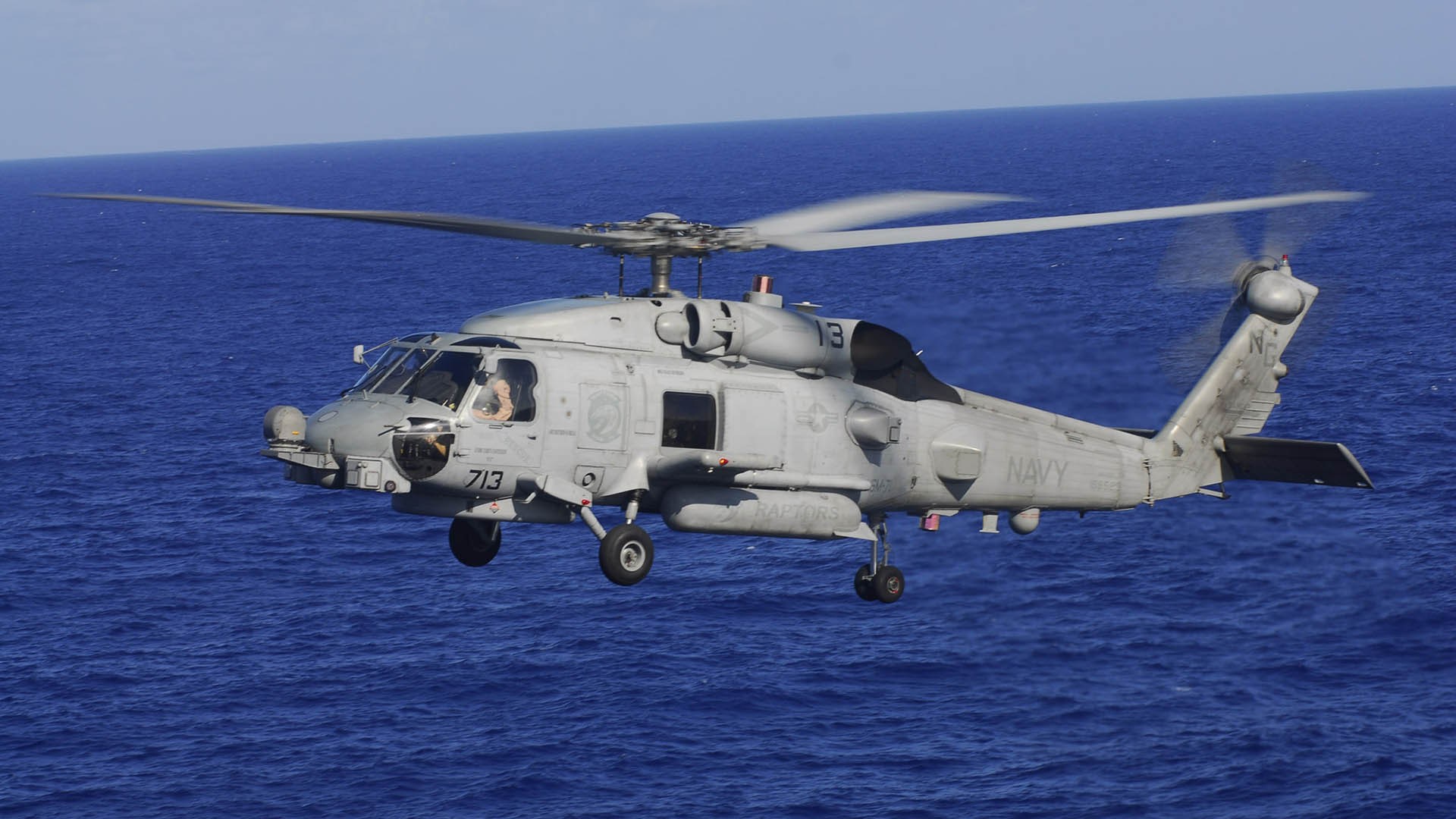
Fitted with Hellfire air-to-surface missiles, this is perhaps the major disadvantage in an ASuW role, as the Hellfire has a limited range of 8 km (the SH-2G(I) is fitted with the Penguin Mk2 Mod7 with a range of 34 kms). It could therefore meet the requirement stated in 2015 to (e) prosecute surface and sub-surface targets, but with limitations.
The other consideration from a navy fleet perspective is that at 19.76 metres long it is larger than an NH90 NFH and therefore unable to embark and operate from all RNZN aviation capable units.
AW159 Wildcat
The AW159 Wildcat is an advanced multi-role, maritime and utility aircraft produced by Leonardo Helicopters. Based on the Lynx family of helicopters, the AW159 replaced the Lynx fleet in the British Army and Royal Navy, entering service in 2015.
Designed from the outset as a maritime helicopter, the airframe design of the Wildcat is built to operate off the smallest frigates and offshore patrol vessels, including in heavy sea states.
The helicopter integrates AESA radar, active dipping sonar, an electrooptical device, ESM and a defence aids suite. Onboard sensors and mission systems enable the Wildcat to autonomously find and track surface and sub-surface targets.
Already capable of carrying a wide range of weapons, missiles, torpedoes, depth charges, rockets and guns, its newly designed weapon wing will be able to carry a maximum load of 20 Martlet Lightweight Multi-role Missiles (LMM) or four Sea Venom missiles, or a mixture of both. Whilst the LMM has a range of 8 km, the Sea Venom, jointly developed by France and the United Kingdom, has a range of 20 km, allowing the helicopter to remain beyond the reach of most modern air defence systems.
As a combat helicopter, its ISR and weapons capability over land as well as sea is notable. As a utility helicopter operating off the OPVs, the Wildcat can lift underslung loads up to one tonne.
In the MOD Major Projects Report 2015, the AW159 was also evaluated alongside the SH-2G(I). It was noted that the Wildcat met or exceeded all user and operational requirements, it benefitted from its fully integrated avionics system, and it was expected to be cheaper to maintain than the Seasprite.
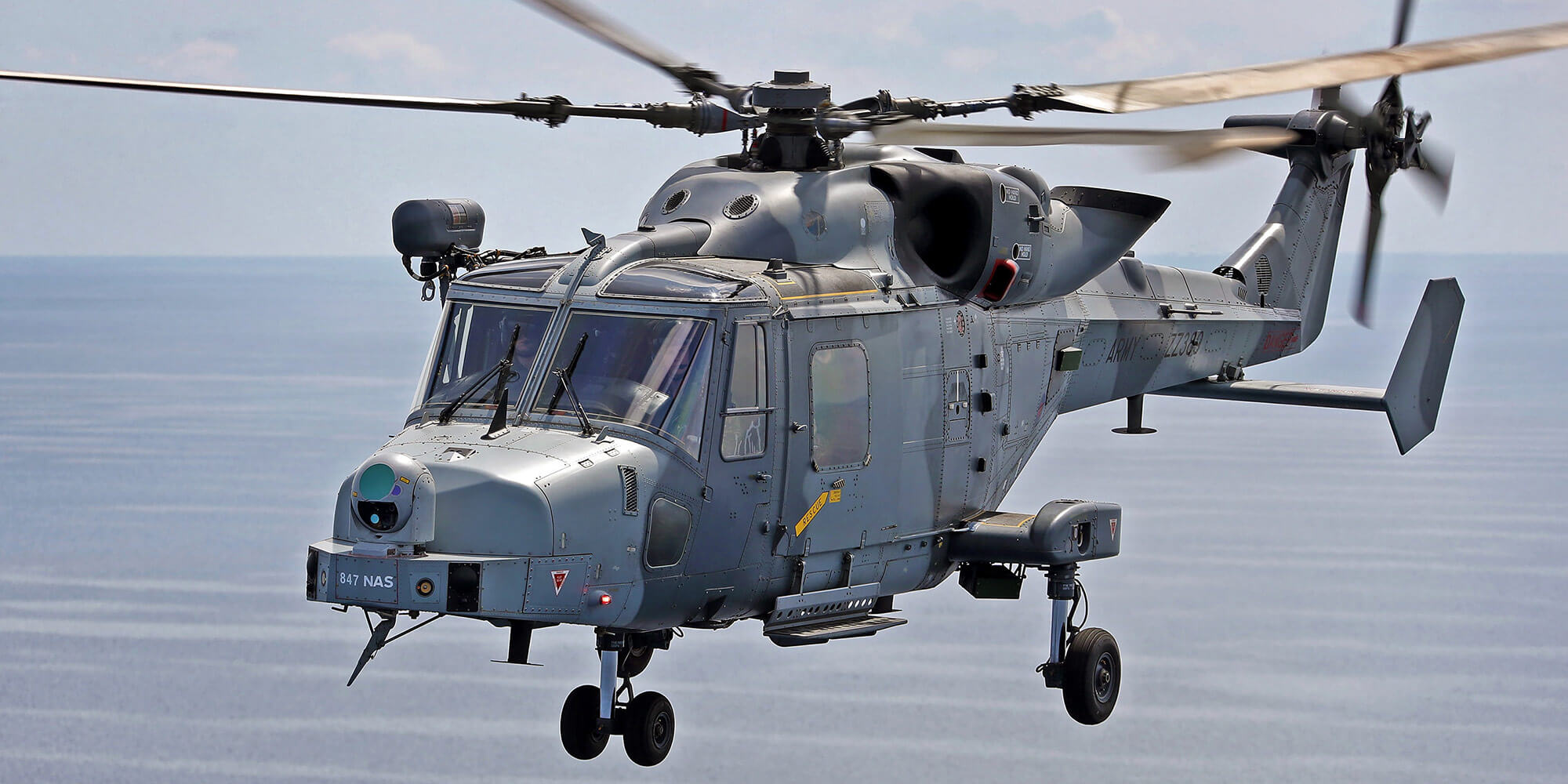
Challenges for the future In considering options for the future maritime helicopter fleet, it is instructive to once again refer to the MOD Major Projects Report 2015 and the recommendations regarding the ultimate purchase of eight NH90 Medium Utility Helicopters (MUH).
Here seven options, 1- 5A, 5B and 5C, were considered to provide a mixed MUH and helicopter training capability. Option 5B was to purchase 9 medium utility aircraft and 8 training and light utility aircraft. Option 5C was to purchase 10 medium utility aircraft and 10 training and light utility aircraft.
In the assessment provided, whilst Option 5C was considered the optimum solution because it met all key operational requirements, Option 5B was considered an acceptable solution because it also met all the operational requirements, but it was noted that readiness could be compromised if concurrent tasks were required. In the event, only eight NH90 MUN helicopters were purchased.
In previously raising the issue of the total number of operational helicopters needed for nine ships with the Commander of Joint Forces in the Spring 2019 issue of Line of Defence Magazine, Rear Admiral Gilmour noted that, “As an operational commander I am aware that quantity can have a quality of its own - it is not ideal to have the latest highest tech that is not available due to the small numbers of them that can be afforded.”
Nine new maritime helicopters are envisioned and therefore the cost/ capability trade-off of purchasing any fewer than this must be carefully weighed.
The Opening sentence is straight away something is showing me that Dr Green is jumping the gun. "...the Defence shopping list includes nine maritime helicopters" For starters that is how many we have now yes, I do agree that he can count. However to say that we are only going to get 9 as replacement is unfounded. What I will say is it will have to be at least 9 helo's but possibly more.
The Royal New Zealand Navy now have more vessels capable of carrying and operating a helo and more vessels are coming with the Enhanced Sealift Vessel and the SOPV. Which he does mention however ...
x2 FFG
x2 OPV
x1 SOPV
x1 MRV
x1 Enhanced Sealift Vessel
x1 AOR
x1 DHV (No hanger operations)
That is 8 vessels that can carry out long term helo operations with 1 being the DHV able to carry out short term operations. Basically only leaving the 2 IPV's not capable of carrying a helo. We also have to remember the MRV and the Enhanced Sealift Vessel (ESLV) can and will be able to carry multiple helo's at any one time, these can be off set by the NH-90's & AW109 but we also have to remember that these versions of the NH-90 and AW109 are not marinised and really should be minimised use on board a sea going vessel and are limited on numbers as well, especially as the fleet gets older and more maintenance is required. While the DHV has no hanger she can still carry out short term helo operations on her own. And that is not even considering an out side change of a 3rd frigate (a very, very much debated outside chance and those that follow and know me know I wish to go back to a 4 frigate navy.)
With 8 airframes that is basically realistically only 3 airframes available at any one time. Even if that number was upped to 9 (which is technically what we have as one is for spare parts)
The DCP-2019 states
Maritime Helicopter Replacement
199. The eight existing Seasprite SH-2G(I), the last of their type, will reach the end of their service lives in the late 2020s. A new fleet of maritime helicopters will be acquired in order to support the naval patrol, sealift and combat capabilities.
200. Maritime helicopters offer surveillance, air transport and combat capabilities. Initial thinking on the replacement helicopters will need to determine the primary role of the aircraft, to ensure they are appropriately suited to complement planned replacements for the patrol, sealift and combat capabilities.
Indicative dates:
Industry engagement commences – 2020
Request for tender – 2024
Introduction into Service – 2028
indicative capital cost - More than $1b
There is no mention of how many air frames, even the planners back here know more air frames will be required. Having the 2 sealift vessels means one will always (in theory) be available at any one time and may require multiple helo's to carry out her operation. Currently Canterbury goes in to a light maintenance period during the off cyclone season. There may come a time where where bother vessels require multiple helo's, as well as the frigates and HMNZS Aotearoa all at once.
Let's now look at the rest of the article;
The article favors AW159 Wildcat, The original article labelled various images wrong, but that is neither here nor there... though it did through me a little. I have the feeling they were paid for this article. The request for tender is 2024, although industry engagement has probably already started.
Under the MH-60R Dr Greener says... and I quote "Fitted with Hellfire air-to-surface missiles, this is perhaps the major disadvantage in an ASuW role, as the Hellfire has a limited range of 8 km (the SH-2G(I) is fitted with the Penguin Mk2 Mod7 with a range of 34 kms). It could therefore meet the requirement stated in 2015 to (e) prosecute surface and sub-surface targets, but with limitations."
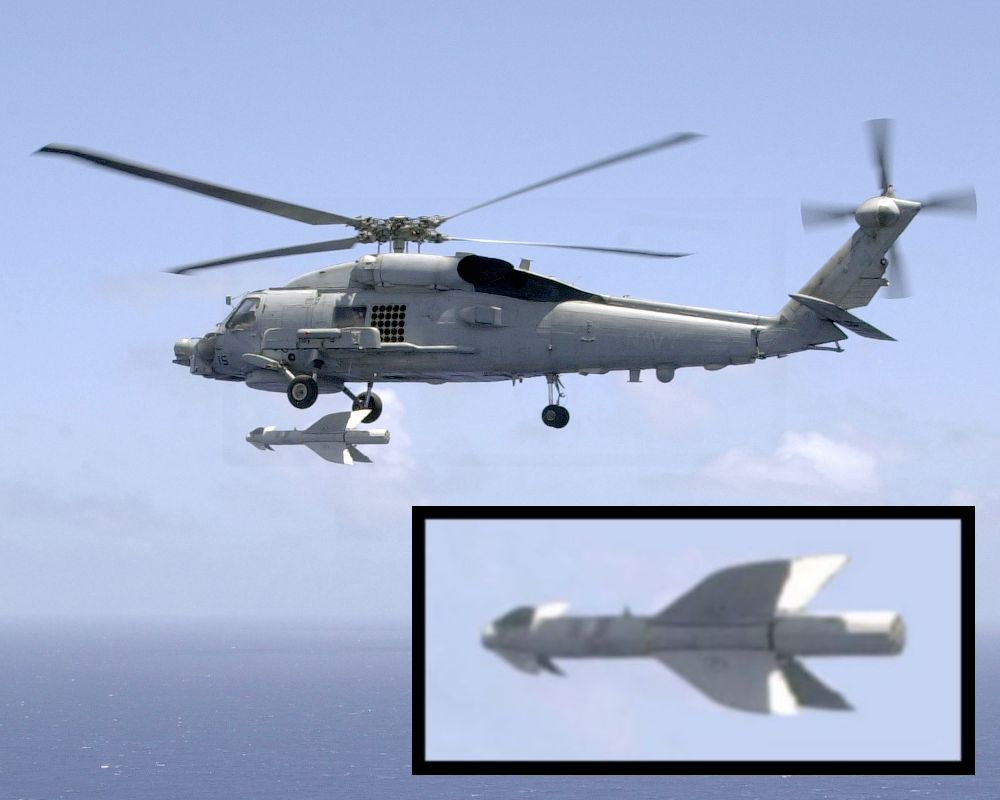
Are you kidding me... I mean are you kidding me, are you really that stupid. If the SH-60B Seahawk is are capable of launching the Penguin Missile I am pretty sure it would not take long to get the Romeo up to spec to do so. Just because a helo is only seen operating a type of missile does not mean it can not take any other and vise versa. It would not be difficult at all to add this to the list of weapons the Romeo can fire, considering they were able to SH-60B to fire and cleared to operate them.
I would also like to add while the DCP-19 doesn't mention any changes on Penguin missile upfront, however who is to say we are still operating them in 8/9 years time when the replacement helo's come online. They may be past their use by date by then who knows.
- How much for an enhanced sealift vessel?
- Other LHD operations
- Why do I think the Endurance 170 LHD is a good choice for the RNZN.
- Ship to Shore : Amphibious Support Ships in The The Asia-Pacific Region
- Options for the NZDF and RNZN 2nd enhanced Sealift vessel
The other issue he goes on about is the length of the Romeo, meaning they may not be able to operate from the two current OPV's but can from every other vessel, and most likely any future vessel. AW109 can still operate from the OPV's and it is not often that they are truly needed for patrols and are usually only required on resupply missions. The Aussies use the Romeo on their ANZAC's, and as stated are capable of landing on the MRV, AOR, and future ESLV.
By time the replacement helo's come on line the current OPV's will be in the process of being replaced with request for tender around 2027 and in service by 2032. So only a couple of years where if needed the OPV's can use the AW109.
My final note here is while currently there are a few operators around the world, there aren't that many for the Wildcat, and there have been issues with integration of various systems. While many of these issues will most likely be fixed it has not been received as well as its predecessor the Westland Lynx. The Romeo has a larger user base, and is a proven platform.
While I don't personally think the Wildcat would really fit the needs of the RNZN and has a few issues to sort this is sill 8 years away and request for tender still 4 years away. The RNZN need a multi-mission helo one that can be used in a variety of operations and the two game changers are the current MRV and ESLV the the missions required of the helo for the various operations from these two vessels. (including the MRV replacement). We would be the only ones in the area operating this airframe. While the Romeo we can tap in to the training, spare parts and upgrade programs etc of Aussie if needed.
On a separate note the DCP points out that the budget is for the replacement maritime helicopters is more than $1b the Romeo was in 2012 worth $42.9 million (48.5 million in 2020 dollars and then add inflation for 2027/8 dollars my guess around $55 million USD and roughly 80 million NZD that is enough to get maybe 12 SH-60R ... but like the Enhanced Sealift Vessel we have to take note of the More than 1 Billion.
The Wildcat AW159 on the other hand in 2020 dollars would around $62 Million and 2025/26 (when contract is signed) $69 Million each you would get 14 Wildcat's from the 1 Billion (or more). Please remember that this is onan estimate and that there so many variables that can put this figure way out.
FFG - Frigate, Guided Missile. (RNZN with CAMM)
OPV - Offshore Patrol Vessel
SOPV - Southern Ocean Patrol Vessel
MRV - Multi Role Vessel
ESLV - Enhanced Sealift Vessel
AOR - Auxiliary Oiler Replenishment
DHV - Dive Hydrographic Vessel
IPV - Inshore Patrol Vessel





